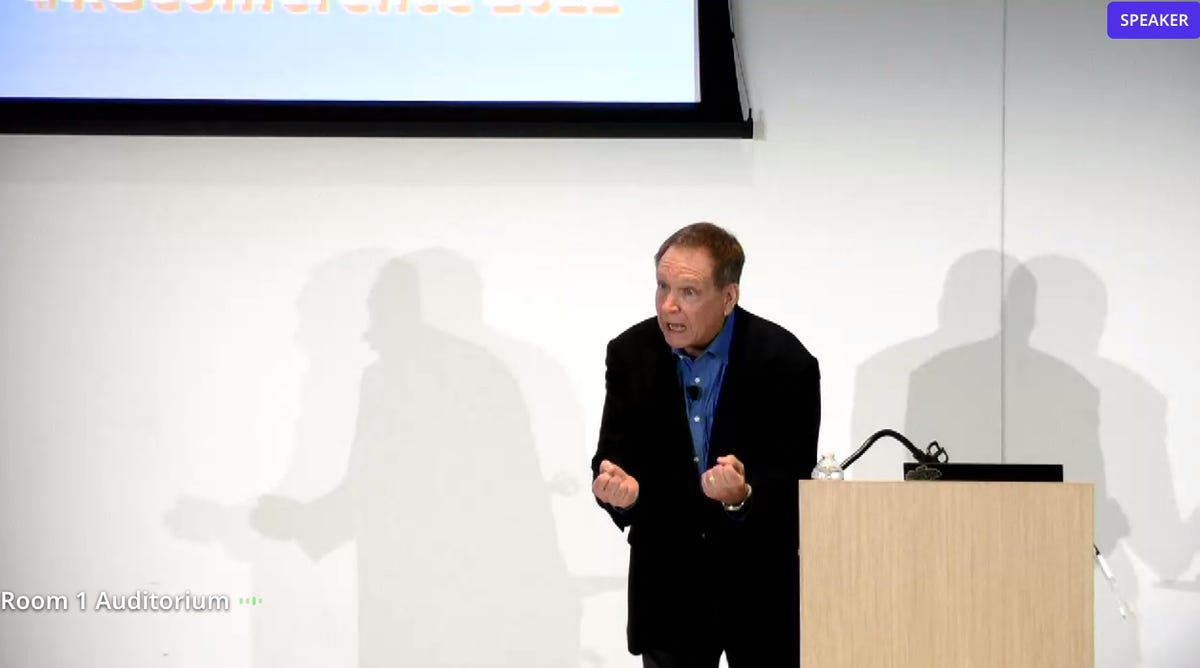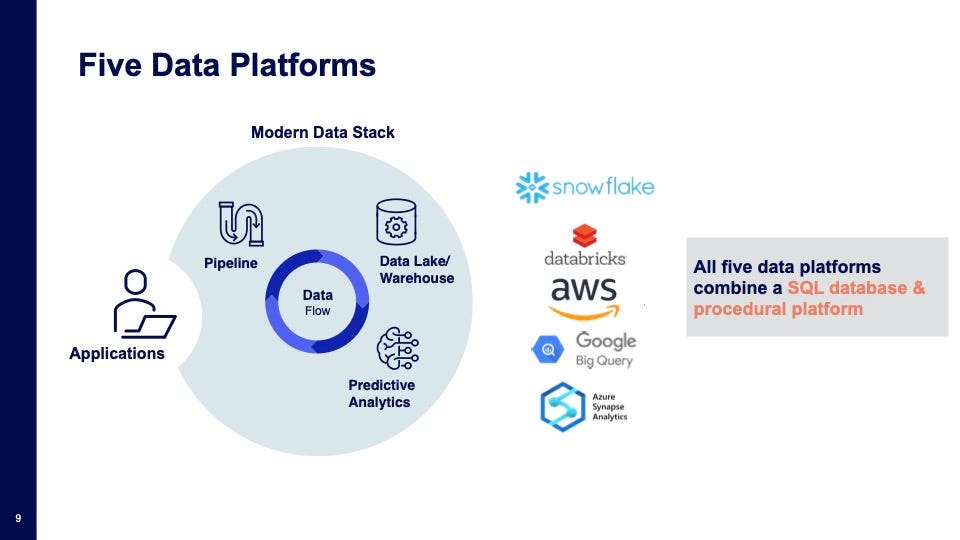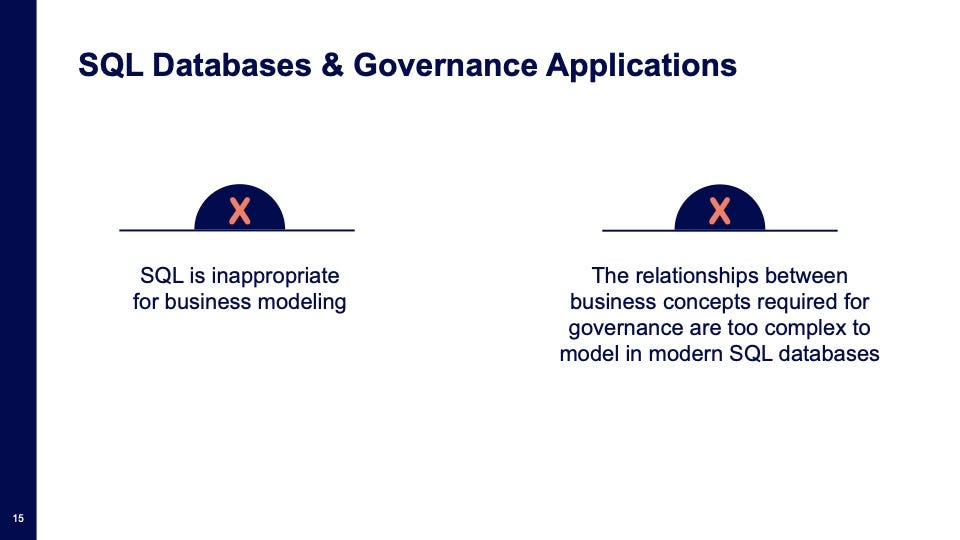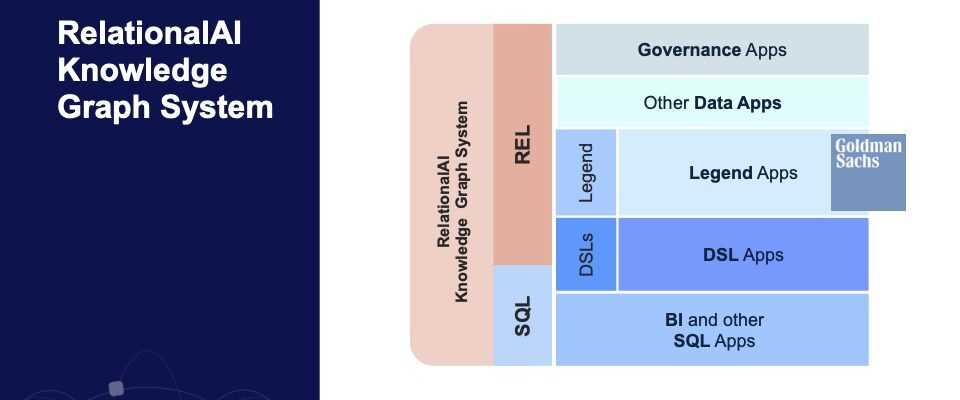Bob Muglia says 20 years of working on database innovation will bring EF Codd’s relational calculus to knowledge graphs, what he calls “relational knowledge graphs”, to revolutionize analytics commercial. Image: Relational AI.
He is something of a bard of databases, able to unravel sweeping narratives about the evolution of technology.
That’s what former Microsoft executive and former Snowflake CEO Bob Muglia did last week during his keynote address at the Knowledge Graph Conference in New York. His talk topic, “From the Modern Data Stack to Knowledge Graphs,” brought together about 50 years of database technology in a new form.
Here’s the story as told by Bob Muglia: Five companies have created modern data analytics platforms, Snowflake, Amazon, Databricks, Google and Azure, but these platforms can’t do business analytics, and can’t not, above all, represent the rules that underlie compliance and governance.
SQL-based algorithms cannot perform such complex “recursive” queries
“The industry knows this is a problem,” reports the businessman. The five platforms, he says, that represent the modern data stack, have made it possible to build a “new generation of these very, very important data applications.” However, “when we look at the modern data stack, and look at what we can do effectively and what we can’t do effectively, I’d say the number one problem customers have with these five platforms is governance. “.
Bob Muglia, who led the SQL Server business at Microsoft, among other feats during a 30-year career building databases, gives examples of business rules that data platforms cannot model.
“If you wanted to make a query to say, ‘tell me all the resources that Fred Jones has access to in this organization’ – that’s a hard query to write,” he explains. “In fact, it’s a query that probably can’t be run efficiently on a modern SQL database if the organization is very large and complex. »
The problem, he says, is that algorithms based on structured query language, or SQL, can’t perform such complex “recursive” queries.

As a bard of database technology, Bob Muglia often conveys technical details with rhetorical flourishes: binary join, binary join, binary join!
“What is a knowledge graph? »
“There have been many generations of algorithms that were all created around the idea of a binary,” says Bob Muglia. “They have two tables with the key to join the two, and then you get a result set, and the query optimizer takes and optimizes the order of those joins – binary join, binary join, binary join! »
Recursive problems such as Fred Jones’ permissions, he continues, “cannot be solved effectively with these algorithms, period.” The right structure for business, as opposed to data relations, according to him, is a knowledge graph.
“What is a knowledge graph? asks the businessman for form. He offers his own definition of what can be a sometimes mysterious concept: “A knowledge graph is a database that models business concepts, the relationships between them, and the associated business rules and constraints. »
Bob Muglia, who is now a board member of start-up Relational AI, told the audience that the future of enterprise applications will be knowledge graphs built on data analytics, but with the particularity that they will use relational computing which dates back to the pioneer of relational databases, EF Codd.
“Go back to the beginning,” he insists. “What is the fundamental algorithmic capability of relational technology, what can be done with it? »

There are five SQL-based analytics platforms, Bob Muglia notes, but none of them are capable of doing business analytics, as opposed to data analytics. Image: Relational AI.
“If we look at what EF Codd was creating in the 1970s, the theorem said that relational algebra and relational queries are precisely equivalent in expressive power – so interesting! I always knew it was interesting, and now I know why. »
By using the technology of Relational AI, in particular the technology developed by founder and CEO Molham Aref for query optimization, combined with knowledge graphs, it is possible to bring the same relational algebra to the organization of concepts business.
“If we go to relational knowledge graphs, we now go to relational calculus fundamentals, and we issue relational calculus statements that are unordered and contain business rules and constraints. »

SQL isn’t going away, but it can’t really handle business analytics queries, according to Bob Muglia. Image: Relational AI.
Work aimed at “fundamentally redefining the way we can use relational algebra”, says Bob Muglia, has been going on for about 20 years, but gained momentum in 2010 with the work of Aref, and in many universities and companies, with hundreds of articles published on the subject.
“This is an incredible cooperative effort between research communities around the world,” he says. “Materialize uses it fundamentally. LinkedIn has embraced some of this through a graph database called Liquid. »
The relational knowledge graph introduces a new language, called Rel, although “SQL remains important,” insists Muglia. “SQL isn’t going away” because it serves as a sort of launch pad into the new world of the relational knowledge graph, he says. “I can even say that SQL’s best days are ahead of it. »
Bob Muglia predicts for the relational knowledge graph “incredible, incredible potential from a software development perspective, and all kinds of things flow from that.” “As the technology matures – and I want to focus on the fact that it’s not mature yet – but as the technology matures, we’re going to see things that we can do with it that we couldn’t even dream of. »
This includes a much greater use of machine learning within business analytics, as the name Relational AI suggests. Also, the business model, for the businessman, will no longer be “just something we put on a whiteboard for an engineer to look at to write Java code.”
“The model,” he adds, “becomes the program, and so business analysts can get involved, and make changes to the data structures.”
For the moment, Relational AI’s technology is “more like a white glove”, says Bob Muglia. “We have a number of organizations we’re doing limited trials with,” and the company hopes to “open it up for self-service” next year with “a developer beta so people can sign up. and start using the system. It’s the same trajectory, he believes, as when he ran Snowflake in 2014 and the company released early versions of its code.
“We are at the start of a whole new era,” he says. “It’s like the modern data stack in 2013, 2014 – that’s where we are in this life cycle. »
“And just as the modern data stack has revolutionized analytics, I have no doubt that knowledge graphs, and, in particular, relational knowledge graphs, will transform the way businesses operate. »
Source: ZDNet.com
